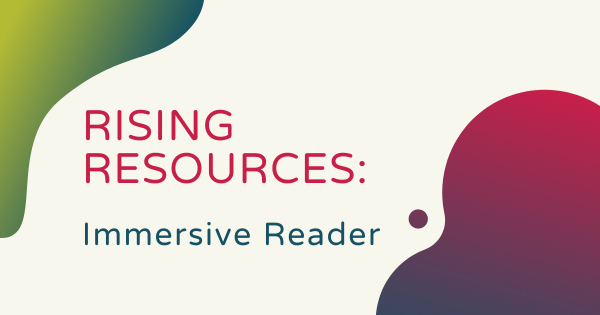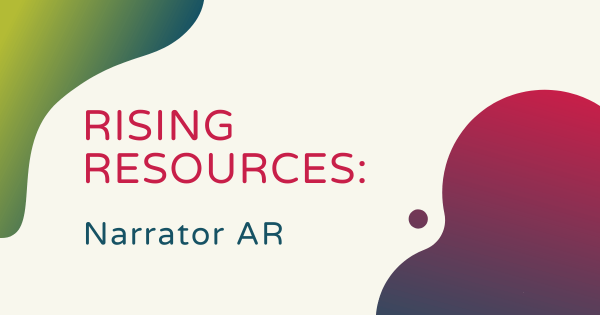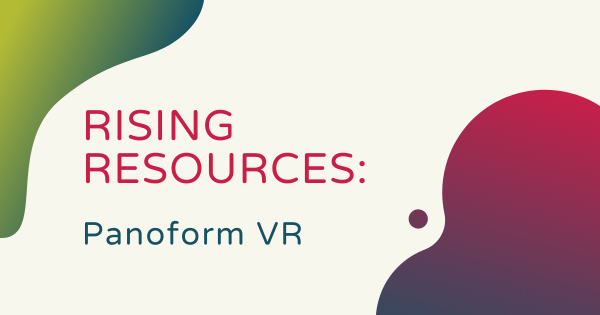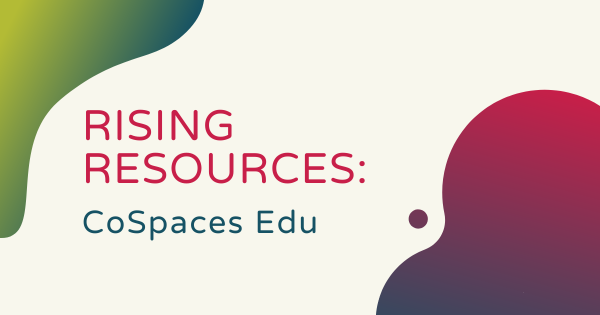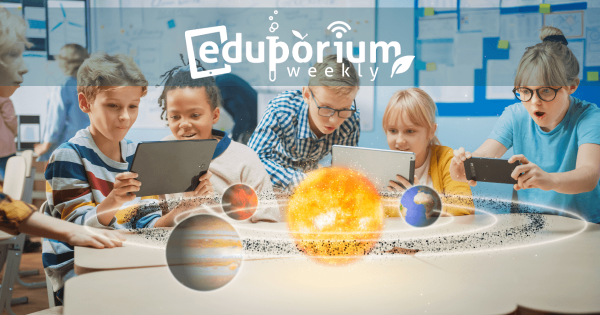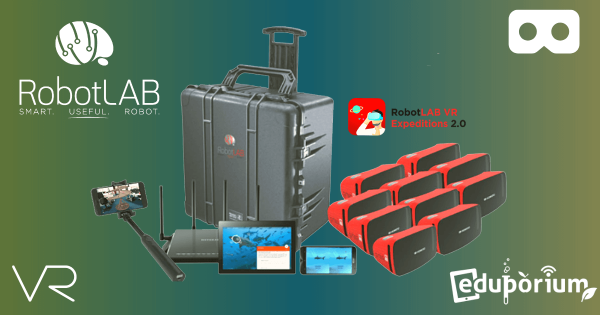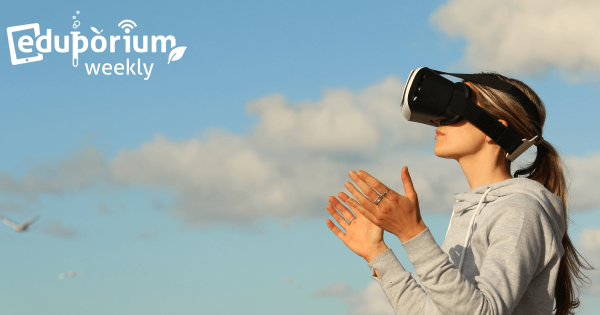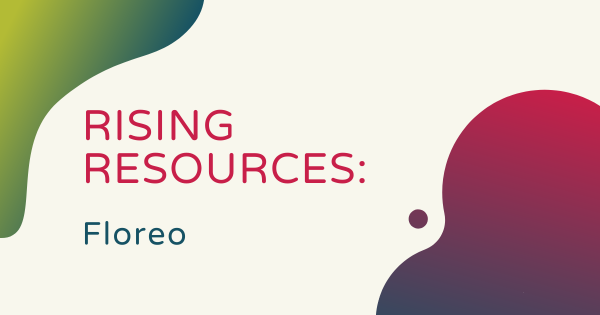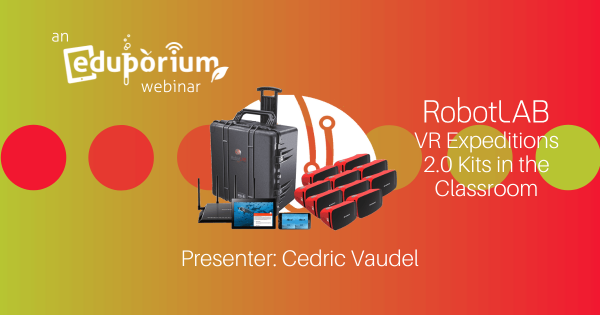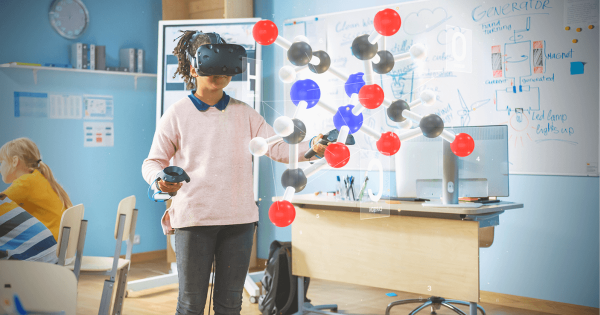Since Microsoft is, of course, one of the worldwide leaders in cutting-edge technology, it should come as no surprise that they also have technologies designed for younger children to use in the classroom. Near the top of that list is this Immersive Reader tool, which helps make written, digital content more accessible for all kids and simultaneously boosts their grasp
AR VR in EDU
With the benefits of VR in education extending immensely, K–12 VR solutions are also evolving. When using this VR hardware and software, educators at all grade levels can create highly engaging, interactive, and immersive learning experiences, empowering students to consume educational content in entirely new ways. Whether it's with high-end systems or simplistic, handheld devices, both AR and VR in EDU are impacting learning. Among the many benefits of immersive learning, students can experience greater retention, increase interest levels, and uncover new passions. Plus, with all this valuable VR content now available, this type of learning goes beyond enjoyment. Educators can create high-impact lessons and experiences and classroom VR tools are an excellent vehicle. Plus, as VR research in education continues to expand, we're likely just getting started.
We consistently share two main VR recommendations for teachers. They include the RobotLAB VR Expeditions 2.0 kits and the TD Synnex VR Kits. A perfect alternative for Google Expeditions kits, the RobotLAB VR solutions are super similar. Teachers can lead interactive Expeditions or VR field trips and utilize real-time points of interest to provide students with pertinent information. With hundreds of Expeditions available within this software, there is truly something for every subject. As for the TD Synnex kits, students can use the ExpeditionsPro app to easily access many appealing VR lessons. Plus, it also boasts tons of amazing features and it's compatible with various smartphones, tablets, and PCs for added convenience. Each of these top virtual reality systems also enable any educator to lead in-depth classroom lessons and pique student interest using this medium.
-
Rising Resources | The Narrator AR Handwriting App
Students could use the Narrator AR app on tablets and mobile phones and it is available on both the iOS app store and Google Play store. Drawing on the immersive power of AR, this platform helps teachers to create a unique and engaging experience as kids will see the words, letters, and sentences literally jump off the screen and start -
Rising Resources | Panoform For VR Creation
Designed to do more than simply immerse them in vivid content, Panoform VR empowers children to become creators and even own how they design and view new-age media. Though it may seem complex and technical, it is actually very accessible—even for beginners who want to explore creating in VR and any students who enjoy learning with this unique medium. -
Rising Resources | The CoSpaces Edu App
Besides creating their own virtual reality content, students can also use the CoSpaces Edu app to explore coding. Within this online platform, they can access this Blockly editor for drag-and-drop programming practice. Called CoBlocks, this visual language is simple for beginners and, as children get better at creating programs, they can move on to script-based languages. -
Eduporium Weekly | Augmented Reality In Education
In schools, AR tools help foster unique and strong learning experiences for students of all ages. In fact, its versatility offers teachers so much potential solely in terms of amplifying engagement. Plus, the variety of avenues they have for using augmented reality help make it viable in almost any subject, offering the chance to educate students in new and affordable -
The RobotLAB VR Expeditions 2.0 System For The Classroom
It remains unfortunate that kids can no longer use the Google Expeditions app to find engaging and immersive lessons, tours, and experiences. The good news, however, is that the Expeditions 2.0 platform from RobotLAB makes a very reliable alternative. With a variety of classroom VR kits and others with AR, these solutions work great in 21st century schools. -
Eduporium Weekly | Benefits Of VR In The Classroom
When it comes to virtual reality in education, the landscape will continue to evolve. Whether with online VR resources like Floreo or the flexible yet very immersive RobotLAB VR Expeditions 2.0 platform, virtual reality can check many of the boxes for 21st century engagement. Plus, it can also positively influence engagement, retention, and SEL skills, like empathy, in students. -
Rising Resources | How Floreo Can Impact Special Ed With VR
For Autism Acceptance Month, we are excited to talk about Floreo. The VR lessons in this app can help autistic and neurodiverse students to rehearse before entering new or uncomfortable social situations, prepare for dealing with overstimulating environments, and with navigating unexpected events that occur with lessons from autistic self-advocates and experts in ASD. -
Webinar: Catch Our RobotLAB VR Expeditions 2.0 Replay
In the webinar, we joined RobotLAB’s VP of Business Development, Cedric Vaudel, who guided the audience through a demo of using RobotLAB’s VR systems, content, and hardware. He began with explaining how their team utilized feedback from educators for designing this final product, including some very specific, education-focused upgrades. Watch the replay inside! -
Using Virtual Reality Systems In Education
AR and VR both unlock unique angles for learning that, along with effective integration, can enhance student learning experiences. They can also bring concepts to life with stunning visual displays and, once these physical and digital worlds intersect, students can gain context that supports instruction and even potentially reaches them on more of an emotional level.




